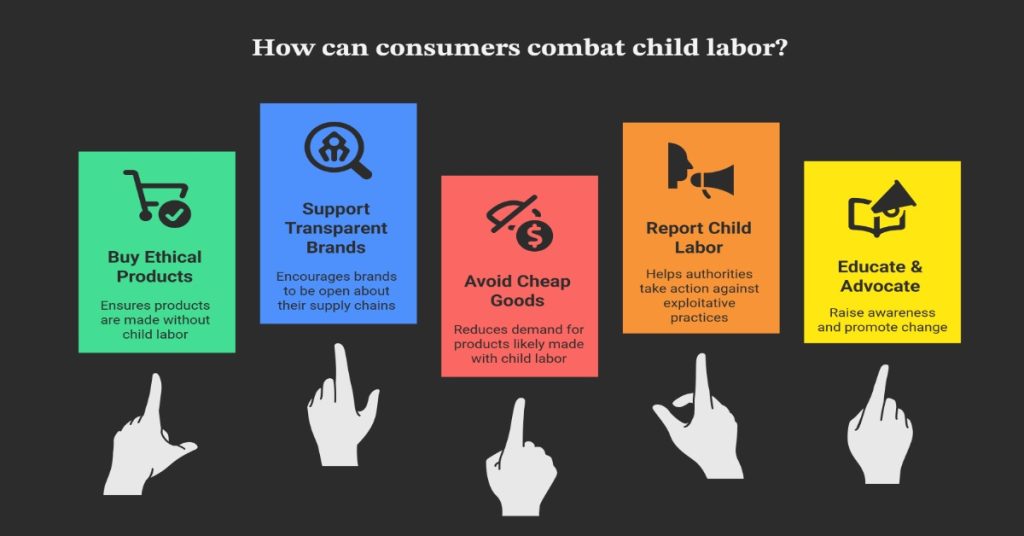
Child labor in India remains one of the most pressing human rights issues, despite decades of legal and social interventions. Millions of children across the country are forced into hazardous and exploitative work, depriving them of education, health, and a dignified childhood.
As consumers, our choices directly impact this crisis. The products we buy from garments to chocolates often have hidden ties to child labor. Understanding the problem, its causes, and how we can contribute to ethical consumption is crucial.
This in-depth blog explores the harsh realities of child labor in India, the laws meant to prevent it, and actionable steps consumers can take to make a difference.
The Harsh Reality of Child Labor in India
India is home to one of the largest populations of child labourers in the world. According to UNICEF, over 10 million children between the ages of 5 and 14 are engaged in work, many in dangerous industries like:
- Agriculture (cotton, sugarcane, tobacco)
- Manufacturing (garments, carpets, fireworks)
- Mining (mica, coal, stone quarries)
- Domestic work (hidden and unregulated)
These children often work 12–16-hour days in hazardous conditions, earning meager wages while facing physical and emotional abuse. Many are trafficked from rural areas under false promises of education or better livelihoods.
Why Does Child Labor Persist in India?
Despite strict laws, child labor continues due to:
- Poverty – Families struggling to survive see child labor as a necessity.
- Lack of Education – Poor access to schools, forces children into work.
- Weak Enforcement – Corruption and lack of inspections allow illegal practices.
- Demand for Cheap Labor – Businesses exploit children to cut costs.
- Cultural Norms – Some communities normalize child work as “helping the family.”
Laws Against Child Labor in India
India has several laws prohibiting child labor, but enforcement remains weak. Key legislations include:
1. The Child Labour (Prohibition and Regulation) Act, 1986 (Amended in 2016)
- Bans employment of children below 14 years in all occupations.
- Allows adolescents (14-18) to work only in non-hazardous jobs.
2. The Right to Education Act (RTE), 2009
- Guarantees free and compulsory education for children aged 6-14.
3. Juvenile Justice Act, 2015
- Criminalizes employing children in hazardous work.
Despite these laws, loopholes exist. For example, children can still work in “family businesses,” which often leads to exploitation in home-based industries like bidi-rolling and carpet weaving.

Industries Exploiting Child Labor in India
1. Garment Industry
Many global fashion brands source from Indian factories where underage workers stitch clothes for long hours in poor conditions.
2. Mica Mining
India supplies 25% of the world’s mica, used in cosmetics and electronics. Thousands of children risk their lives digging for mica in illegal mines.
3. Fireworks & Matches
Sivakasi, Tamil Nadu, is a hub for firecracker production, employing children in life-threatening environments.
4. Agriculture
Children work in cotton fields, tea plantations, and sugarcane farms, exposed to pesticides and extreme heat.
5. Domestic Work
Many girls are forced into domestic servitude, hidden from public scrutiny and vulnerable to abuse.
How Consumers Can Combat Child Labor
1. Buy Ethical & Certified Products
Look for Fair Trade, GoodWeave, or SA8000 certifications that ensure child-labor-free supply chains.
2. Support Transparent Brands
Research companies that disclose their manufacturing processes and labor practices.
3. Avoid Suspiciously Cheap Goods
Extremely low prices often indicate exploitation.
4. Report Child Labor
If you suspect child labor, contact:
- Childline (1098)
- National Commission for Protection of Child Rights (NCPCR)
5. Educate & Advocate
Spread awareness and support NGOs like Vayam, Bachpan Bachao Andolan, Save the Children, and CRY.

People Also Ask (PAA)
1. What is the main cause of child labor in India?
Poverty is the primary driver, forcing families to send children to work instead of school. Lack of education and weak law enforcement further perpetuate the cycle.
2. Which industry has the most child labor in India?
Agriculture employs the highest number of child labourers, followed by manufacturing (garments, carpets) and mining (mica, coal).
3. Is child labor illegal in India?
Yes, employing children below 14 is illegal under the Child Labour Act, but enforcement remains inconsistent.
4. How can I check if a product uses child labor?
Look for ethical certifications like Fair Trade, GoodWeave, or Rainforest Alliance, and research brands’ labor policies.
5. What are the punishments for child labor in India?
Employers can face 6 months to 2 years in jail and fines up to ₹50,000 under the Child Labour Act.

Final Thoughts: Our Role in Ending Child Labor
Child labor thrives because of systemic failures but consumers hold power. By making informed, ethical choices, we can push businesses toward fair practices. Supporting NGOs, advocating for stronger laws, and raising awareness are crucial steps.
Every child deserves safety, education, and a future free from exploitation. As consumers, we must ensure our purchases don’t come at the cost of their childhood.
Read More
Causes of Child Labour in India: Poverty, Lack of Education & Socio-Economic Factors
How to Verify If a Business Is Truly Child Labour-Free
How to Volunteer for Organizations Fighting Child Labour
